For the 2025 school year, there is 1 public preschool serving 449 students in School District No. Re-3 Fort Morgan.
Public Preschools in School District No. Re-3 Fort Morgan have a diversity score of 0.54, which is less than the Colorado public preschool average of 0.63.
Minority enrollment is 73% of the student body (majority Hispanic), which is more than the Colorado public preschool average of 52% (majority Hispanic).
Overview
This School District
This State (CO)
# Schools
8 Schools
802 Schools
# Students
3,427 Students
295,618 Students
# Teachers
226 Teachers
19,047 Teachers
Student : Teacher Ratio
15:1
15:1
District Rank
School District No. Re-3 Fort Morgan, which is ranked within the bottom 50% of all 179 school districts in Colorado (based off of combined math and reading proficiency testing data) for the 2021-2022 school year.
The school district's graduation rate of 77% has decreased from 78% over five school years.
Overall District Rank
#150 out of 179 school districts
(Bottom 50%)
(Bottom 50%)
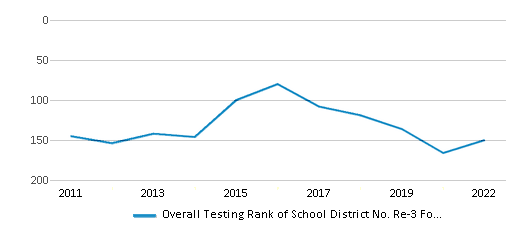
Math Test Scores (% Proficient)
15%
32%
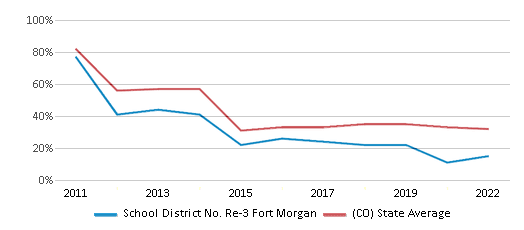
Reading/Language Arts Test Scores (% Proficient)
27%
45%
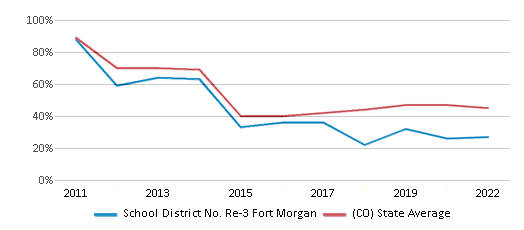
Science Test Scores (% Proficient)
(20-21)10%
29%
Graduation Rate
77%
82%

Students by Ethnicity:
Diversity Score
0.51
0.63
# American Indian Students
28 Students
1,423 Students
% American Indian Students
1%
n/a
# Asian Students
24 Students
10,368 Students
% Asian Students
1%
4%
# Hispanic Students
2,226 Students
109,408 Students
% Hispanic Students
65%
37%
# Black Students
166 Students
15,060 Students
% Black Students
5%
5%
# White Students
938 Students
141,495 Students
% White Students
27%
48%
# Hawaiian Students
2 Students
1,064 Students
% Hawaiian Students
n/a
n/a
# Two or more races Students
43 Students
16,757 Students
% of Two or more races Students
1%
6%
Students by Grade:
# Students in PK Grade:
196
31,964
# Students in K Grade:
253
38,652
# Students in 1st Grade:
230
39,705
# Students in 2nd Grade:
272
41,446
# Students in 3rd Grade:
263
39,521
# Students in 4th Grade:
273
39,811
# Students in 5th Grade:
219
39,230
# Students in 6th Grade:
250
9,397
# Students in 7th Grade:
277
6,033
# Students in 8th Grade:
245
5,688
# Students in 9th Grade:
267
1,068
# Students in 10th Grade:
251
1,032
# Students in 11th Grade:
232
1,020
# Students in 12th Grade:
199
1,051
# Ungraded Students:
-
-
District Revenue and Spending
The revenue/student of $12,541 in this school district is less than the state median of $15,473. The school district revenue/student has stayed relatively flat over four school years.
The school district's spending/student of $11,502 is less than the state median of $15,791. The school district spending/student has stayed relatively flat over four school years.
Total Revenue
$43 MM
$13,426 MM
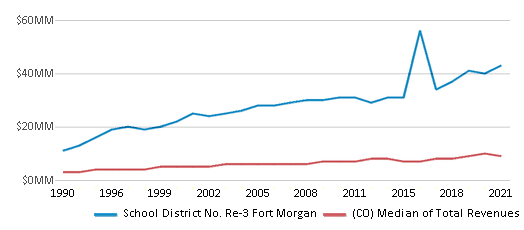
Spending
$39 MM
$13,702 MM
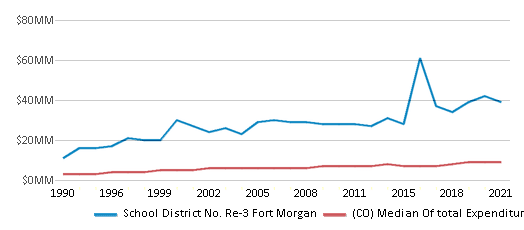
Revenue / Student
$12,541
$15,473
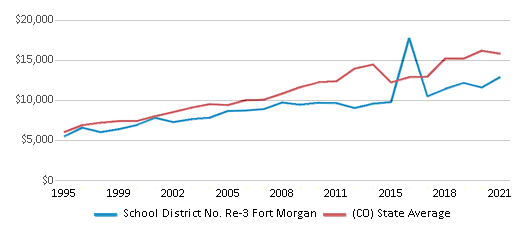
Spending / Student
$11,502
$15,791
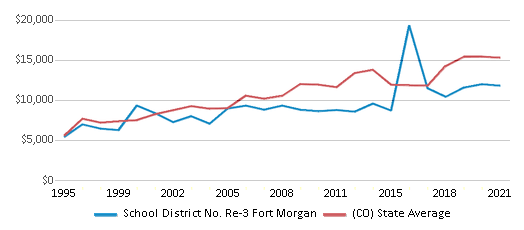
Best School District No. Re-3 Fort Morgan Public Preschools (2025)
School
(Math and Reading Proficiency)
(Math and Reading Proficiency)
Location
Grades
Students
Rank: n/an/a
300 Sherman Street
Fort Morgan, CO 80701
(970) 867-2998
Fort Morgan, CO 80701
(970) 867-2998
Grades: PK-K
| 449 students
Recent Articles

Year-Round Or Traditional Schedule?
Which is more appropriate for your child? A year-round attendance schedule or traditional schedule? We look at the pros and cons.

Why You Should Encourage Your Child to Join a Sports Team
Participating in team sports has a great many benefits for children, there is no doubt. In this article you will learn what those benefits are.

White Students are Now the Minority in U.S. Public Schools
Increasing birth rates among immigrant families from Asia and Central and South America, combined with lower birth rates among white families, means that for the first time in history, public school students in the United States are majority-minority. This shift in demographics poses difficulties for schools as they work to accommodate children of varying language abilities and socio-economic backgrounds.





